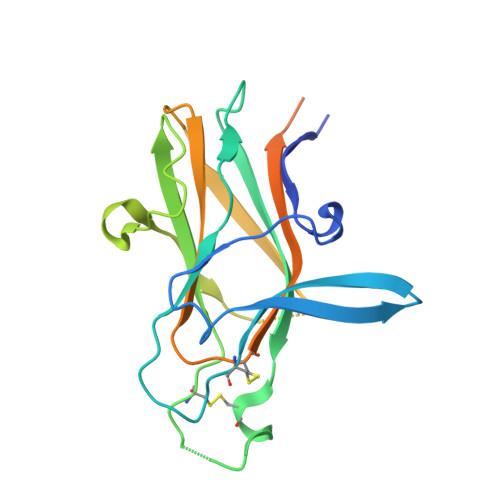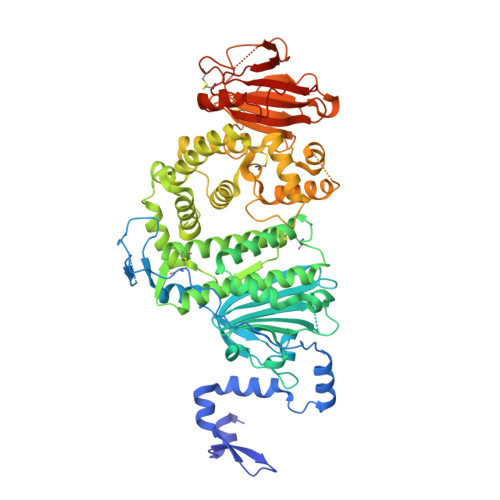Human herpesvirus 8 molecular mimicry of ephrin ligands facilitates cell entry and triggers EphA2 signaling.
Light, T.P., Brun, D., Guardado-Calvo, P., Pederzoli, R., Haouz, A., Neipel, F., Rey, F.A., Hristova, K., Backovic, M.(2021) PLoS Biol 19: e3001392-e3001392
- PubMed: 34499637
- DOI: https://doi.org/10.1371/journal.pbio.3001392
- Primary Citation of Related Structures:
7B7N - PubMed Abstract:
Human herpesvirus 8 (HHV-8) is an oncogenic virus that enters cells by fusion of the viral and endosomal cellular membranes in a process mediated by viral surface glycoproteins. One of the cellular receptors hijacked by HHV-8 to gain access to cells is the EphA2 tyrosine kinase receptor, and the mechanistic basis of EphA2-mediated viral entry remains unclear. Using X-ray structure analysis, targeted mutagenesis, and binding studies, we here show that the HHV-8 envelope glycoprotein complex H and L (gH/gL) binds with subnanomolar affinity to EphA2 via molecular mimicry of the receptor's cellular ligands, ephrins (Eph family receptor interacting proteins), revealing a pivotal role for the conserved gH residue E52 and the amino-terminal peptide of gL. Using FSI-FRET and cell contraction assays, we further demonstrate that the gH/gL complex also functionally mimics ephrin ligand by inducing EphA2 receptor association via its dimerization interface, thus triggering receptor signaling for cytoskeleton remodeling. These results now provide novel insight into the entry mechanism of HHV-8, opening avenues for the search of therapeutic agents that could interfere with HHV-8-related diseases.
Organizational Affiliation:
Department of Materials Science and Engineering, Johns Hopkins University, Baltimore, Maryland, United States of America.




















